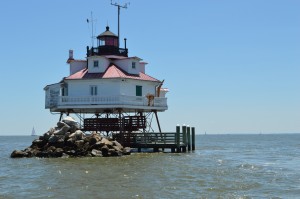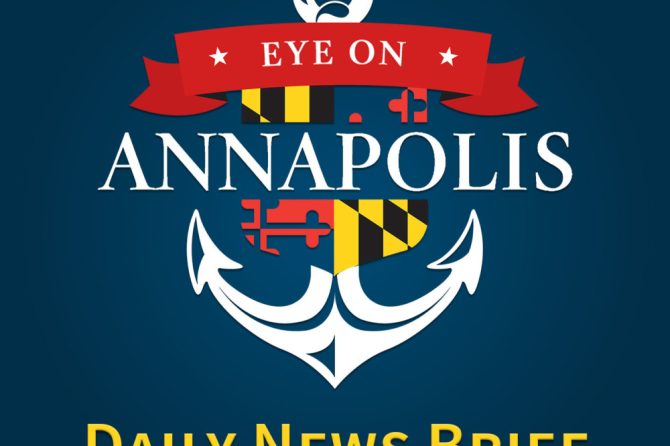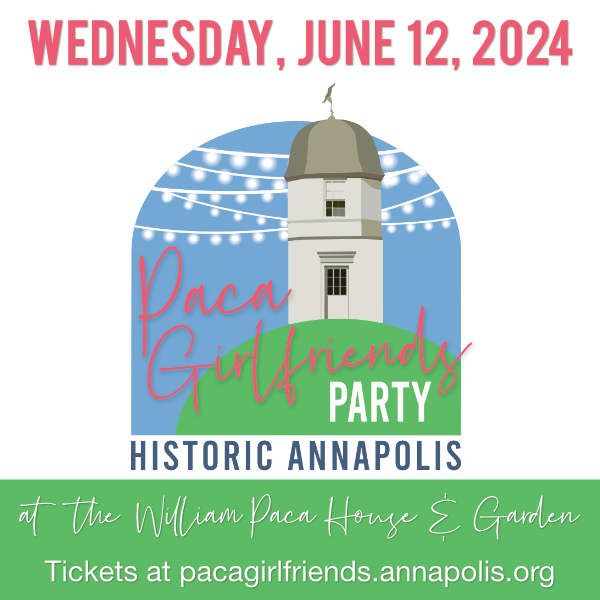 As part of Governor Larry Hogan’s Regional Cabinet Meeting in Cambridge, Special Secretary for Smart Growth Wendi Peters and Maryland Department of Planning (Planning) Secretary Robert McCord have announced seven projects selected to receive Historic Preservation Capital Grants from the Maryland Historical Trust (MHT) at a ceremony in nearby Easton. The event was held at one of the seven sites receiving an award – the historic Easton Armory, which is owned and operated by Waterfowl Chesapeake and serves as the home of the Waterfowl Festival, a yearly event first held in 1971.
As part of Governor Larry Hogan’s Regional Cabinet Meeting in Cambridge, Special Secretary for Smart Growth Wendi Peters and Maryland Department of Planning (Planning) Secretary Robert McCord have announced seven projects selected to receive Historic Preservation Capital Grants from the Maryland Historical Trust (MHT) at a ceremony in nearby Easton. The event was held at one of the seven sites receiving an award – the historic Easton Armory, which is owned and operated by Waterfowl Chesapeake and serves as the home of the Waterfowl Festival, a yearly event first held in 1971.
“The State of Maryland is rich in its historically significant and diverse architecture, proud heritage, and cultural traditions,” said Governor Hogan. “It is important that we recognize and preserve our history all across the state, and our administration is pleased to restore this vital funding.”

For the first time in nearly a decade, Governor Hogan restored funding for the Historic Preservation Capital Grant Program, which assists bricks-and-mortar historic preservation projects. MHT received more than 70 applications for projects competing for the $600,000 in available grants, demonstrating strong demand for the funding within communities across the state. Organizations can request up to $100,000 per project; awards range from $34,000 to the full $100,000.
The Capital Grant Program provides support for physical preservation projects as well as for architectural, engineering, archeology, and consulting services needed in the development of a construction project. Acquisition of properties can also be funded. All assisted properties are either listed on or eligible for National Register of Historic Places designation.
Since its inception in 1978, the Capital Grant Program has awarded nearly $15 million for physical preservation measures to more than 500 historic properties in every county and Baltimore City. Non-profits, local jurisdictions, business entities, and individuals are all eligible applicants, encouraging a wide range of property owners or site stewards to apply.
MHT, an agency of the Maryland Department of Planning, was formed in 1961 to assist the people of Maryland in identifying, studying, evaluating, preserving, protecting, and interpreting the state’s significant prehistoric and historic districts, sites, structures, cultural landscapes, heritage areas, cultural objects, and artifacts, as well as less tangible human and community traditions. Through research, conservation, and education, MHT assists the people of Maryland in understanding their historical and cultural heritage.
Online applications for Fiscal Year 2019 Capital Grant funding will be available this fall 2018 on MHT’s website at http://mht.maryland.gov/grants_capital.shtml. Application deadlines and workshop dates will also be announced later this year.
Details on the projects receiving grants are listed below.
Hammond-Harwood House (Annapolis, Anne Arundel County) ($100,000)
Grantee: Hammond-Harwood House Association, Incorporated (non-profit)
A National Historic Landmark, the Hammond-Harwood House is a symmetrical brick mansion with a five-bay center and smaller end wings. It was constructed in 1774 and is considered among the most significant Georgian residences of colonial America. The two-story end wings with polygonal bays were a very rare feature in America before the Revolution, and the house retains beautifully detailed exterior and interior features and woodwork. The architecture of the house is attributed to William Buckland, a British-born architect who designed many noted buildings and interiors in colonial Maryland and Virginia; several other buildings in Annapolis are attributed to him. There is a small addition on the south side from 1875, but essentially the building has remained unaltered. The house is currently used as a museum of fine and decorative arts and is open to the public. Funding will assist the restoration of windows and ceilings.
Stone House at Historic Elk Landing (Elkton, Cecil County) ($100,000)
Grantee: The Historic Elk Landing Foundation, Inc. (non-profit)
The Stone House at the Historic Elk Landing, built in 1782-83, is a 2-story stone construction with several features characteristic of 18th century vernacular dwellings in northeastern Maryland, including its center hall plan and corner fireplaces. It is significant for its association with early Scandinavian settlement in Maryland and as an important site on the mid-Atlantic’s northernmost navigable inland waterway. The property remained in the hands of one family from 1735 until its purchase by the Town of Elkton in 1999; the Historic Elk Landing Foundation was created the following year to lease and operate the site. The house is currently used for limited historical interpretation and fundraising activities. Grant funding will assist in the restoration of windows, doors, and framing.
Easton Armory (Easton, Talbot County) ($100,000)
Grantee: Waterfowl Chesapeake, Inc. (non-profit)
The Easton Armory was built in 1927 and is a large brick structure constructed in a fortress-like style; like many armories across the state, its design was overseen by Robert Lawrence Harris, who was state architect under the administration of Governor Albert C. Ritchie. The building served as an armory and social space for the Easton community until it was acquired by the Department of Natural Resources in 1976 and then by Waterfowl Chesapeake in 1997. The building is known locally as the “Waterfowl Building” since it is the home and headquarters for the Waterfowl Festival, which celebrates Eastern Shore heritage and wildlife. Funding will assist the rehabilitation of the windows and framing.
Union Mills Homestead – Shriver Grist Mill (Westminster, Carroll County) ($96,000)
Grantee: The Union Mills Homestead Foundation, Inc. (non-profit)
The Shriver Grist Mill at the Union Mills Homestead, constructed in 1797 and in use until 1942, is representative of early industrial development. An imposing and sturdily-built two-story structure of local brick, the mill once served as the nucleus for a complex which included the house and farm as well as a tannery, a cooper, and a blacksmith. The complex stands on an important early transportation route linking Maryland and Pennsylvania, a route which became Maryland’s first Rural Free Delivery (RFD) route in 1896. The homestead is still owned by the Shriver family, now on its seventh generation. The mill has been restored and is currently used as a museum with daily interpretive tours. Funding will go towards the rehabilitation of the water flume and mill works.
Thomas Point Shoal Lighthouse (Anne Arundel County) ($100,000)
Grantee: United States Lighthouse Society, Incorporated (non-profit)
Thomas Point Shoal Lighthouse, constructed in 1875 at the confluence of the Severn River and the Chesapeake Bay, is a hexagonal frame lighthouse, 1.5 stories high, supported by 9 steel frame screw piles which were uniquely suited to muddy, sandy soil conditions. An icon of the Chesapeake Bay, it is the only screw-pile lighthouse remaining in its original location on the Bay. In 1986, the lighthouse was the last on the Bay to be fully automated, and it is still used as an aid to navigation today. Funding will contribute to the rehabilitation of the exterior steel and iron foundation of this National Historic Landmark.
Wallace Office Building (Cambridge, Dorchester County) ($70,000)
Grantee: Historic Cambridge, Inc. (non-profit)
Completed in 1849-1850, the diminutive, columned Wallace Office Building was built as a law office by James Wallace, who later rose to prominence as a state legislator, Civil War hero, and early canning entrepreneur. Occupying a prominent corner, it is one of the earliest surviving commercial buildings in Cambridge and possibly the purest example of Greek Revival architecture in Dorchester County. It is currently vacant and undergoing rehabilitation; once complete, a local radio station plans to rent the space. Funding will assist the overall interior and exterior rehabilitation.
Clifton Mansion (Baltimore City) ($34,000)
Grantee: Friends of Clifton Mansion, Inc. (non-profit)
Clifton Mansion began life as a late 18th century farmhouse built for Captain Henry Thompson, who formed the First Baltimore Horse Artillery for the defense of the City in the War of 1812. Clifton was remodeled into an elaborate Italianate villa by a later owner, merchant and philanthropist Johns Hopkins. Hopkins hired the Baltimore architecture firm of Niernsee and Neilson to transform the house, adding a tower and creating grand interior spaces with elaborate finishes. In 1874, Hopkins bequeathed the property to the Trustees of the Johns Hopkins University as the site for a university, but his wish was never fulfilled, and in 1895 the City of Baltimore purchased the mansion and the 260-acre property for use as a park. Clifton Park was substantially improved to plans by the Olmsted Brothers between 1904 and 1917. The mansion is currently used as a community space and office space for non-profits. Grant funding will assist the restoration of the historic dining room, including its distinctive historic paint scheme and finishes.












































